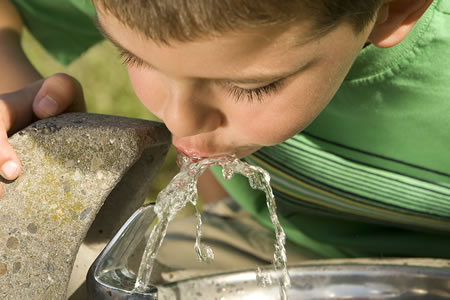THE CONTROVERSY
Unfortunately, the idea of using soil amendments or fertilizers that contain or are primarily derived from human waste is repulsive to many people. Not surprising since from early childhood we have been told that human wastes are anything but useful. Reinforcement of this idea continues from peers, the media and our own intuition for the rest of our lives. As our culture has changed from agrarian to industrial and to consumerism, nearly all need for and knowledge of the fertilizer value of manures, especially human manure has faded. The risk and benefit of recycling human waste is better understood by science than at any time in the past but feared more by the general public.
For many decades the scientific storehouse of knowledge has grown, each study adding to that understanding. Risk from pollutants and pathogens have received most of the scientific study (The EPA guide to Bio solids Risk Assessment >). The results have led to industrial pretreatment programs and pathogen treatment methods that have made the use of treated human waste from most sewage treatment plants and septic tanks safe for the individuals that work with it and the general public if it is used according to regulations that are based on its composition and stabilization level. In other words, if bio solids pose any pathogen risk, however small, its use must be regulated. If it poses no risk from pathogens or pollutants of concern, then it can be used by the general public just like most other manure derived products. Over application of plant nutrients, nitrogen and phosphorus in particular, contained in any manure derived material can pose a risk to surface and ground water. We must all be careful to use soil amendments or fertilizers properly, whether from organic or inorganic sources.
A common concern expressed by some about our practices is the repeated application of our “lime stabilized bio solids which are derived primarily from septage” (septage bio solids) to the same land year after year. It may be helpful to understand that prior to the development of chemical fertilizers; animal manures were used on the same ground for generations. Treated septage bio solids are very similar but much safer than other animal manures. Septage bio solids contain the same plant food and soil building organic matter but the septage bio solids do not pose a risk from pathogens such as e-coli and other bacteria that are common to animal manures. The lime stabilization treatment method that we use kills all bacteria, viruses and parasites. The quantity of lime per acre is about 3/4 of a ton annually which is typical for western Washington agriculture.
Another concern relates to heavy metals, whether they are present and at what concentrations. Heavy metals in domestic septage are very low because they are not typically washed down household drains or toilets. The Environmental Protection Agency has standards for “Exceptional Quality Bio solids” which assures that repeated yearly applications of theses bio solids at fertilizer rates will not degrade the soil for any crops. Our septage testing for over twenty years has always found the metals of concern well below EPA limits, which are not unlike the levels in animal manures and often lower than in many inorganic fertilizers.
Another common concern is the appearance of large volumes applied to the land. Septage bio solids contain all essential plant nutrients but at very low concentrations because most of it is water. On the average, septage bio solids contain 97.5% water and 2.5% solids. The average percentage by weight of plant available nitrogen, phosphorus, and potassium (N-P-K) in septage is only .02 -.0125 -.0125 compared to 10-20-20 for a common farm fertilizer. For comparison, one 6000 gallon load of septage weighs about 50,000 lbs and contains less than 11 lbs of plant available nitrogen or enough for 14% of an acre, assuming a target plant available nitrogen rate of 75 pounds per acre. 50000 lbs of 10-20-20 fertilizer would be enough for over 66 acres or 476 times more area.

Much of the septage bio solids that are land applied by Bio are even more dilute because most of the solids are removed by thickening and dewatering. The solids are then diverted to other uses and locations. The plant available N-P-K concentrations in the remaining septage bio solids are 75% less. Stated another way, 10-20-20 is over 1900 times more concentrated which explains why it takes so many truck loads for large fields. From a hydraulic loading perspective, we usually apply less than the equivalent of 3 inches of precipitation spread out over several months. The rainfall at each of our sites averages over 40 inches per year so the additional liquid can be easily accommodated.
At Bio Recycling we control the quality of septage coming to us. We have contracts with the suppliers that limit deliveries to domestic septage i.e. septage that is produced by households or commercial sources that do not introduce other substances that would degrade the septage safety or quality. A sample is collected from each treated batch of septage. It is then mixed with samples from prior batches. Twice each month a sample of the mixed samples is sent to the lab for analysis of nitrogen which is the most limiting element. Twice each year mixed samples are sent to the lab for analysis of regulated metals that determine if the limits of exceptional quality bio solids have been exceeded.
Late each summer or early fall a soil scientist samples areas we fertilize for all major plant nutrients and metals. The soil nitrate levels determine if our application rates are too high or low for the crops grown and the soil types. The ground and surface water at our sites is also monitored by professional hydrologists for changes that would likely occur if application rates were too high.
